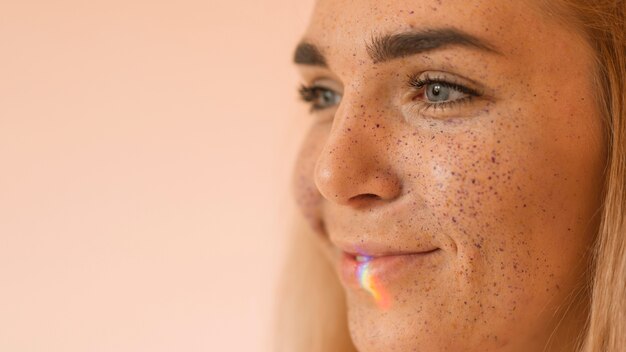Melasma is a common skin condition characterized by dark, discolored patches that typically appear on the face. It often affects women more than men and can be triggered by factors such as hormonal changes, sun exposure, and genetics. While melasma is not harmful, it can cause individuals to feel self-conscious about their appearance. Fortunately, there are several effective Melasma Treatment in Dubai options available to help achieve a beautiful complexion.
Understanding Melasma
Before delving into treatment options, it’s essential to understand what melasma is. This skin disorder usually manifests as brown or gray-brown patches, primarily on the cheeks, forehead, nose, and upper lip. The condition is caused by an excess production of melanin, the pigment responsible for skin color. Hormonal changes, particularly during pregnancy or while taking birth control pills, can exacerbate melasma. Additionally, prolonged sun exposure can worsen melasma, making sun protection a critical element of any treatment plan.
Topical Treatments
Topical treatments are among the first lines of defense in combating melasma. These treatments work by lightening affected areas and reducing melanin production.
Hydroquinone is one of the most commonly prescribed topical agents for melasma. It works by inhibiting melanin production, leading to a gradual lightening of dark patches. However, prolonged use may cause side effects or a paradoxical darkening of the skin, so it is essential to follow a dermatologist’s guidance.
Other effective topical treatments include retinoids, which promote cellular turnover and help to fade dark spots. These vitamin A derivatives can enhance skin texture and tone over time. Additionally, products containing azelaic acid or kojic acid have shown promise in treating melasma by providing both lightening effects and anti-inflammatory benefits.
Chemical Peels
Chemical peels involve applying a chemical solution to the skin, which exfoliates the outer layer and reveals healthier skin underneath. This process encourages cell regeneration and can significantly improve the appearance of melasma. A variety of chemical peels are available, depending on the severity of the melasma and individual skin type.
Glycolic acid peels are among the most common for treating melasma. They help to exfoliate and brighten the skin effectively. For more pronounced melasma, trichloroacetic acid (TCA) peels may be used, as they penetrate deeper into the skin. It’s essential to have chemical peels administered by a qualified skin care professional to avoid potential complications.
Laser Treatments
Laser therapy has emerged as a popular option for treating melasma. These advanced techniques work by targeting the pigment in the skin while leaving surrounding tissue unharmed. Different types of lasers are effective for melasma, including fractional lasers and Q-switched lasers.
Fractional lasers operate by creating micro-injuries in the skin, which stimulates collagen production and encourages the skin’s natural healing process. This not only reduces melasma but also improves overall skin texture. Q-switched lasers focus on breaking down the melanin deposits responsible for discoloration. While laser treatments can be highly effective, results may vary, and multiple sessions are often required for optimal outcomes.
Intense Pulsed Light (IPL)
Intense Pulsed Light (IPL) therapy is another treatment option for melasma that employs a broad spectrum of light to target pigmented areas. Unlike laser treatments, IPL uses multiple wavelengths, allowing for a more gentler approach to skin rejuvenation. The light energy penetrates the skin’s surface, breaking down melanin and promoting a more even skin tone.
IPL treatments can also address other skin concerns, such as sun damage and redness, making it a versatile option. While IPL can produce noticeable improvements, it is important to note that some individuals may experience temporary redness or swelling following treatment.
Microdermabrasion
Microdermabrasion is a non-invasive exfoliation technique that removes the uppermost layer of dead skin cells, resulting in a brighter and more even complexion. This treatment can help fade melasma by encouraging cell turnover and improving skin texture.
Microdermabrasion may not provide dramatic results on its own, but when combined with other treatments, it can enhance overall skin health. It is suitable for a variety of skin types and requires minimal downtime. For best results, multiple sessions are typically recommended.
Sun Protection
Regardless of the treatment option chosen, daily sun protection is critical in managing melasma. Ultraviolet (UV) rays from the sun can trigger increased melanin production, leading to darkening of already affected areas. Wearing broad-spectrum sunscreen with an SPF of at least 30, reapplying throughout the day, and wearing protective clothing can significantly minimize melasma's visibility and prevent recurrence.
Lifestyle Modifications
Adapting certain lifestyle habits can also support melasma treatment. Incorporating a balanced diet rich in antioxidants, vitamins, and minerals can contribute to overall skin health. Foods high in Vitamin C, such as citrus fruits and leafy greens, can enhance skin’s appearance and resilience. Staying hydrated by drinking plenty of water can also improve skin’s hydration and look.
Additionally, avoiding triggers such as hormonal fluctuations and excessive sun exposure can help manage melasma. Stress management techniques, such as yoga or meditation, may also promote skin health by reducing hormonal imbalances that can worsen melasma.
Consulting a Professional
Given the wide array of treatment options available, consulting a dermatologist or skincare professional is crucial for those dealing with melasma. A professional can assess individual skin types, recommend appropriate treatments, and develop a customized plan tailored to specific needs. Following a doctor’s advice and being patient with the process can lead to better outcomes over time.
In conclusion, while melasma can be a challenging condition, various treatment options can effectively help achieve a beautiful complexion. From topical treatments to advanced procedures, individuals have the resources to reclaim their skin's radiance. Prioritizing sun protection and healthy lifestyle choices amplifies these efforts, paving the way for renewed confidence and beauty.





Comments